Australian Pain Society NEWSLETTER


VOLUME 40, ISSUE 7
BLOG WEB

2 AUSTRALIAN PAIN SOCIETY NEWSLETTER VOLUME 40, ISSUE 7, AUGUST 2020 CONTENTS Contents Editor’s note 3 President’s Message 4 ASM 2021 5 ASM 2020 Webinar 10 It never hurts to discuss pain 11 IASP Revised Definition of Pain 19 Global Year 20 Recent Publications 23 Education 24 Grants 25 Surveys 27 Events & Notifications 28 FYI 33 New Members 34 Calendar of Events 35 Vision, Mission & Priorities 37 APS Directors 38 Office Bearers 39
Editor’s Note
While it is unfortunate that the 2020 Annual Scientific Meeting was cancelled, the Scientific Program and Local Organising Committees have been hard at work on the 2021 edition. Submissions for abstracts, topical sessions, the Rising Star Award, and the Distinguished Member Award are now open. Make sure you check out all the dates and deadlines, so you don’t miss out on all the opportunities available for the 2021 Annual Scientific Meeting.
It’s exciting to see that this month the Society will be running our inaugural webinar with Professor John Cryan. This is a great opportunity for APS members, so I strongly encourage you to register for this free event. I first heard John speak in his plenary at the IASP World Congress in Yokohama in 2016 and am looking forward to hearing about the latest developments in targeting the microbiota-gutbrain axis has for visceral pain and associated co-morbidities.
A big thanks to the Australian Physiotherapy Association for sharing a range of articles and interviews from the July issue of InMotion. It’s great to see APS members get the opportunity to share their knowledge and insights, despite the 2020 Annual Scientific Meeting not being able to proceed.
In global news, I’m sure that all of you would have seen that the IASP has revised the definition of pain. This change comes as the result of two years of work from a multinational task force, led by Professor Srinivasa N. Raja from Johns Hopkins University School of Medicine. The addition of six key notes that accompany the definition provide valuable context in a range of scenarios. These notes include valuable updates that are great to see acknowledged in an official capacity –particularly that the inability to communicate
Lincoln Tracy
does not negate the possibility that a human or a non-human animal experiences pain. Thank you and congratulations to all involved in the process: the task force, the IASP Council, expert consultants, and the public.
My fellow locked down Victorian Laura Prendergast provides a great piece discussing how key areas from the IASP’s Global Year for the Prevention of Pain can still be achieved during the COVID-19 pandemic. This is definitely worth a read, so I encourage everyone to read through and think about how you can continue to support yourselves and those around you during these challenging times.
Finally, thanks to APS Member Steven Faux and colleagues for sharing their recent publication on the need to maintain a high level of planning and awareness for managing COVID-19 patients as they progress into the post-acute and recovery phases of care.
Until next time,
Lincoln Tracy Editor

3 VOLUME 40, ISSUE 7, AUGUST 2020 AUSTRALIAN PAIN SOCIETY NEWSLETTER
EDITOR’S NOTE
Message from the APS President
ANNUAL SCIENTIFIC MEETING 2021
Please be assured that we are 100% committed to bringing you a conference in 2021.
You’ve told us that you missed the opportunity to connect with each other in person this year – we did too!
Ideally, we will be able to bring you the fantastic APS conference experience we’ve all grown to love, in a face to face format in Canberra next year.

However, we recognise our hold on world events is tenuous, particularly with COVID-19. Rest assured, we stand ready to convert the conference format to hybrid or fully online, as determined by community health needs at the time. No matter the format, we will make sure you have an opportunity to network, collaborate and learn in true APS style.
Dr. Anne Burke
Please submit your valuable contributions with full confidence that we will do whatever we need to do in order to deliver the ASM in the safest possible way in April 2021.
To view the abstract submission guidelines please click here
We look forward to receiving your submissions. Should you have any queries regarding your submission or the process, please contact the Conference Secretariat
4 PRESIDENT’S MESSAGE AUSTRALIAN PAIN SOCIETY NEWSLETTER VOLUME 40, ISSUE 7, AUGUST 2020
ABSTRACT SUBMISSIONS NOW OPEN!
Submission Deadline:
Tuesday 27 October 2020
The Scientific Program Committee and Local Organising Committee for the 2021 Australian Pain Society 41st Annual Scientific Meeting are pleased to advise that abstract submissions for APS 2021 are now open.
Please note the following points regarding the submission process:
• The submitting author MUST be the main author and the person who will present the work at the ASM.
• If your abstract is accepted, either as a free paper or poster, there is an expectation that you will attend the conference to present this paper.
• Expressions of Interest (EOI) for travel grant applications are also being collected as part of the submission process.
To view the abstract submission guidelines please click here.
We look forward to receiving your submissions. Should you have any queries regarding your submission or the process, please contact the Conference Secretariat.
TOPICAL SESSION SUBMISSIONS NOW OPEN!
On behalf of the Scientific Program Committee and the Local Organising Committee, we are pleased to advise topical session submissions for APS 2021 are now open.
The deadline for Topical Session submissions is:
Monday 28 September 2020
View the topical session submission guidelines. Visit the online topical session submission portal
We look forward to receiving your submissions. Should you have any queries regarding your submission or the process, please contact the Conference Secretariat
5 VOLUME 40, ISSUE 7, AUGUST 2020 AUSTRALIAN PAIN SOCIETY NEWSLETTER ASM 2021
RISING STAR AWARD APPLICATIONS NOW OPEN!
Submission Deadline:
Monday 28 September 2020
This award showcases rising star pain researchers in Australia, and may be awarded annually subject to the application of suitable candidates. The Rising Star Winner will receive a return domestic airfare, accommodation, and complimentary registration to attend the 2021 APS 41st ASM where they will give a plenary presentation to showcase their work and ideas.
Applications are now open, for further information and to apply, please click here.
Eligibility Criteria
• Nominees must hold a PhD, and be within 5 years of conferral by the deadline of this award application.
• Applicants can be working in any field of pain research, including basic science, biomedical, clinical, and other applied or cross-disciplinary sciences.
• The selection committee will consider personal or extenuating circumstances that might provide grounds for consideration if the above eligibility criteria are not met.
Please include details in the nomination form such as:
- Time out for maternity/parental leave/carer’s leave/illness
- Significant breaks in research time (e.g., due to clinical work, reduced research-focussed postdoctoral employment)
- Pro rata (so relative to opportunity for those working as clinicians or teaching/research posts)
• Only individual scientists are eligible (not research teams)
• Applicants must be available to attend APS 2021, and to deliver the Rising Star presentation
• Applicants must be a member of the APS
• Applicants must be an Australian citizen/ resident, currently working in Australia and have spent at least two post-doctoral years in Australia, or have returned to continue working in Australia.
Selection Criteria
This award will be based on excellence in painrelated research achievement, demonstrated from the applicant’s track record, including:
• Specific research achievements or discoveries
• Research impact/application
• Collaboration achievements – independent of your supervisor
• Publication record (quality and impact of publications; e.g., H-index, standing of journals, citations)
• Grants obtained (as a Chief Investigator)
• Patents held
• Peer recognition: Awards or prizes, national profile, international profile.
For further information and to apply, please visit the conference website
We look forward to receiving your submission!
6 AUSTRALIAN PAIN SOCIETY NEWSLETTER VOLUME 40, ISSUE 7, AUGUST 2020
ASM 2021
PRE-CONFERENCE WORKSHOP SUBMISSION NOW OPEN!
Submission Deadline: Wednesday 28 September 2020
The Scientific Program Committee (SPC) and the Local Organising Committee (LOC) invite the submission of half-day PreConference Workshops for inclusion in the program on Sunday 18 April 2021.
This is the first time this opportunity has become available and we look forward to receiving submissions for a 3-hour Workshop.
Guidelines
• If accepted, the submitter of the Workshop will be in charge of coordinating all speakers.
• Speakers must be able to present onsite at the National Convention Centre Canberra, ACT, on Sunday 18 April.
• Workshop speakers will receive a complimentary registration to the Workshop.
To submit your Workshop, please click here and complete the form.
Once completed, it can be returned to the APS 2021 Conference Secretariat by Monday 28 September 2020.
The accepted Workshop will be included on the APS 2021 conference website, will be marketed alongside the other 6 workshops being held on the Sunday, and will be included in the online registration form.
We look forward to receiving your submission!
7 VOLUME 40, ISSUE 7, AUGUST 2020 AUSTRALIAN PAIN SOCIETY NEWSLETTER
ASM 2021
NOMINATION FOR APS DISTINGUISHED MEMBER AWARD – 2021
The Board of Directors is seeking nominations from all Australian Pain Society (APS) members for candidates to be considered for the Distinguished Member Award/s to be presented at the APS 41st Annual Scientific Meeting to be held in Canberra from 18-21 April 2021.
Eligibility Criteria
Candidates must be APS members who generally have had a lengthy career in the field of pain and have:
• Made major contribution1 towards the Society, and
• Significantly contributed to the science of pain management, and/or
• Played a significant clinical, educational or research role in the field of Pain Management in Australia.
1 Major contributions include, but are not limited to:
• Scientific Program Committee involvement
• Pain research
• APS projects
• Subcommittee involvement
• Board liaison
• Contributions to ASM presentations
Nomination Guidelines:
• A ‘Nomination for Distinguished Member Award’ form must be completed.
• As a guide, it is desirable that nominees have held continuous APS membership for over 10 years.
• Nominations must include an 800-900 word biography of the nominee. The Board will not consider incomplete nomination forms.
• Unsuccessful nominations are not automatically put forward in subsequent years.
• The nominator must be prepared to present a brief summary of the Distinguished Member biography in the ASM program, or arrange a suitable alternate for the presentation segment.
Submission
• All nominations to be submitted to the APS Secretariat by 31 October 2020.
Notification:
• The APS Board will notify successful nominees by 31 December 2020.
• Distinguished Member recipients are actively encouraged to attend the Annual Scientific Meeting in order to receive their award in person from the APS President.
A listing of past recipients of the Distinguished Member Award, including their biographies, can be found on the APS website.
8 AUSTRALIAN PAIN SOCIETY NEWSLETTER VOLUME 40, ISSUE 7, AUGUST 2020 ASM 2021
Musculoskeletal Clinical Translation Framework Lecture
The Australian Pain Society Annual Scientific Meeting has included a Physiotherapy Pre-Conference workshop for seven years. So, it was with great sadness that the workshop, together with all the other content from our conference, went by the wayside due to COVID-19. HOWEVER, it is a delight to report that the content of that workshop was tweaked to create an online lecture. Tim Mitchell, a Specialist Musculoskeletal Physiotherapist from Perth, has presented on the content of the Musculoskeletal Clinical Translation Framework. This framework is a simple one-page template which can be used to explore, identify, and evaluate the relevance of the numerous possible biopsychosocial contributors to pain. The framework was developed by Tim, together with colleagues Helen Slater and Darren Beales, all from Curtin University, WA.
The lecture was delivered “live” via the Australian Physiotherapy Association (APA) Zoom platform on Tuesday 28th July, and is kindly being made available for ALL APS members via the members’ section of the APS website. Our thanks to Tim Mitchell and the APA for their collaboration in this lecture.

9 VOLUME 40, ISSUE 7, AUGUST 2020 AUSTRALIAN PAIN SOCIETY NEWSLETTER ASM 2021
Inaugural Australian Pain Society Webinar
Gut Feelings: The Microbiota-Gut-Brain Axis as a Key Regulator of Visceral Pain
We missed seeing him present at APS 2020, so we’re giving you a second chance!
Join us for the Australian Pain Society’s inaugural webinar with Professor John F. Cryan, University College Cork, Ireland.
Date: Tuesday 25 August 2020
Time: 6PM - 7PM AEST
Registration fees:
APS Members: Complimentary (registration still required)
Non-Members: $45
Registration Link: To register, click here
Website: www.dcconferences.com.au/apswebinars
John F. Cryan is Professor & Chair, Department of Anatomy & Neuroscience, University College Cork, Ireland and is also a Principal Investigator at APC Microbiome Ireland.

Presentation Outline:
Visceral pain is a significant and prevalent feature of several disorders including the functional gastrointestinal disorder, irritable bowel syndrome (IBS). Treatment strategies are limited and often unsatisfactory which has opened up new research avenues into the aetiology of visceral pain.
This research has led to an increased appreciation of the role of the brain gut axis in modulating viscera pain responses. More recently, the interactions between the gut microbiota and the central nervous system have emerged indicating that visceral pain related disorders may be prospective candidates for symptom relief via microbial manipulation.
In this talk, Professor Cryan will highlight the enormous and exciting potential that targeting the microbiota-gut-brain axis has for visceral pain and associated co-morbidities. Professor Cryan’s presentation will be followed by a live Q&A session.
For further information and to register please click here.
Questions? Please email us here.
10 AUSTRALIAN PAIN SOCIETY NEWSLETTER VOLUME 42, ISSUE 7, AUGUST 2020 ASM 2020 WEBINAR
Professor John F. Cryan,
This article was first published in the July 2020 issue of InMotion, an Australian Physiotherapy Association publication, and is reproduced with permission.
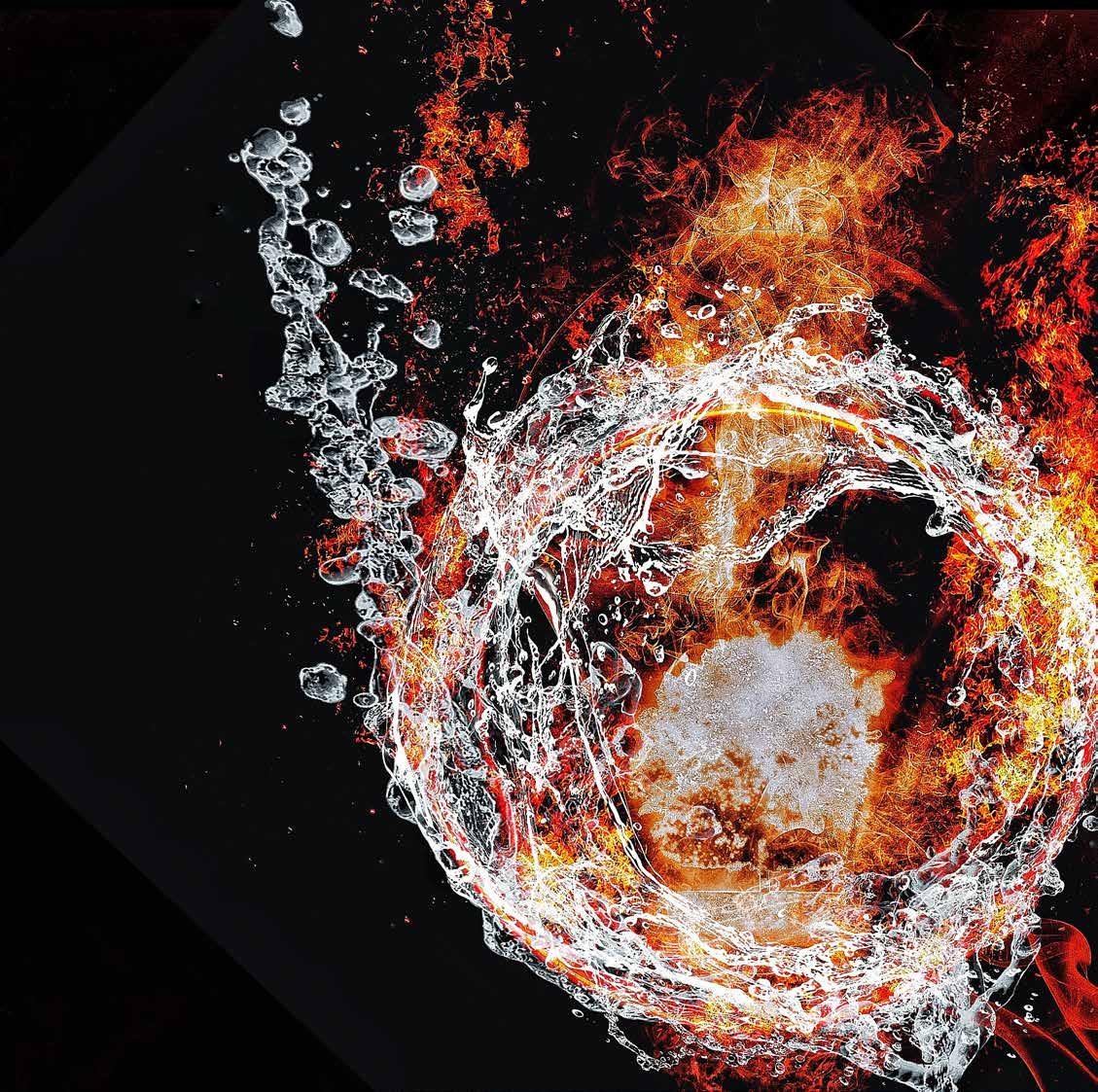
Never hurts to discuss pain
Although the 2020 Australian Pain Society’s 40th annual scientific meeting was postponed due to COVID-19, InMotion provides a platform for some of the physiotherapists who were lined up to present at the conference in April to share their research, insights and pain management stategies. Here are a mix of contributions and interviews with Melissa Mitchell.
July 2020 25 PM Images /via Getty Images & koyu/iStock/Getty Images Plus
This article was first published in the July 2020 issue of InMotion, an Australian Physiotherapy Association publication, and is reproduced with permission.
Learning to learn about pain
In his book Future Shock published in 1970, futurist Alvin Toffler wrote ‘the illiterate of the 21st century will not be those who can’t read and write but those who can’t learn and unlearn and relearn’. It is a sentiment to which physiotherapist and author APA Musculoskeletal Physiotherapist David Butler wholeheartedly prescribes, and one he often quotes in his many presentations nationally and internationally about pain and pain education. David is also fond of sharing his own quote, ‘learning is the most renewable energy of all on the planet’, at the end of his presentations.
Both concepts go to the core of what David, a pain communication expert and learning enthusiast, had planned to speak about at the Australian Pain Society (APS) conference, and that is what it means to learn, specifically discussing whether patients might be victims of clinicians’ learning experiences and what can be done to change that. Under the umbrella topic of ‘Thinking outside of the box’ and alongside fellow pain researchers Dr Tasha Stanton, Dr Fiona Kerr and Dr Hannah Brown, David had planned to engage his audience in thinking about andragogy—the education of adults.
The co-author of Explain Pain, an educational tome for clinicians, people in pain and their loved ones that he co-wrote with Lorimer Moseley in 2003, says when groups of university-educated people are asked whether anybody has ever taught them how to learn, the vast majority, upon reflection, will say no. And, he argues, if people have never really been taught how to learn, they might have passed on their faulty learning strategies to their patients, to their friends, family and on and on.
‘In terms of learning for physios, if they see a client just twice a week for half an hour, that’s only 0.6 per cent of the week. So what happens in the rest of the week?’ David says. ‘So this why we’re looking at this “learning to learn” thing in some detail.
‘Lorimer and I wrote Explain Pain a while ago and we have been reflecting on elements of that. So we were actually teaching in what was called “one-way transmission education”, this is education from us to the patient. That’s typical in medicine and health, that education goes one way. It’s as though you’ve opened the patient’s brain and poured in a bit of knowledge and put a few drugs in and shut their brain and they should get better. But when you really look at educational psychology, that’s really not the best way to do it. So this “learning to learn” thinking has been out there in education—but never really in pain education or in health,’ he says.
Educators, David argues, have a responsibility to get better at educating and build up the learner’s ability to learn, particularly when it comes to complex matter such
as new pain science. One of the key educational systems that seems to fit health, which David says is still not really used, is self-regulated learning. Modelled on the work of educational psychologist Barry Zimmerman and the selfefficacy model of Albert Bandura, self-regulated learning involves staged learning, guided by metacognitive, cognitive and motivational strategies.
‘When I teach people about this, I always tell them to go and watch the movie Dead Poets Society. t’s 30 years old now but that’s where the wonderful Robin Williams … gave a great demonstration of self-regulated learning as the teacher in it. He said things like “it’s not what another thinks, it’s what you think” and “when you think you know something, look at it in a different way”—all this great stuff,’ David says. ‘So we also link this self-regulated learning into growth mindsets. Fixed and growth mindsets as researched by Carol Dweck. With pain, we’re trying to link into and enhance the growth mindset.
‘So then my talk was going to be about some of the skills and strategies that people use to drive this self-regulated learning. And so I have a list of about, from the science, 12 examples of strategies that people can use to drive it (see breakout on adjacent page). And it’s the learning to learn which has effects on your own learning, your child’s learning and your patient’s learning. This has become a key part of a lot of the new methodologies that we’re using in some of the randomised controlled trials going on now. We’re making sure, where possible, that participants in trials have the best skills to learn. Clinicians and their patients will be the ultimate beneficiaries.’
APA Honoured Member Dr David Butler is an educator, author, clinician and researcher. He is a Director of the Neuro Orthopaedic Institute and an Associate Professor at the University of South Australia.

26 australian.physio
12 AUSTRALIAN PAIN SOCIETY NEWSLETTER VOLUME 40, ISSUE 7, AUGUST 2020
Examples of strategies used in self-regulated learning
Cognitive strategies

Avoid passive learning and writing everything down
Try and work it out yourself before Googling
Cramming doesn’t work—’chunk’ information
Have learning experiences in different contexts
Motivational strategies
Set goals, seek a mastery of each step
Avoid hindsight bias
Reflect on learning with a feeling of achievement
Seek the best immunwological health
Metacognitive strategies
Reflect on the process before, during and after a learning event
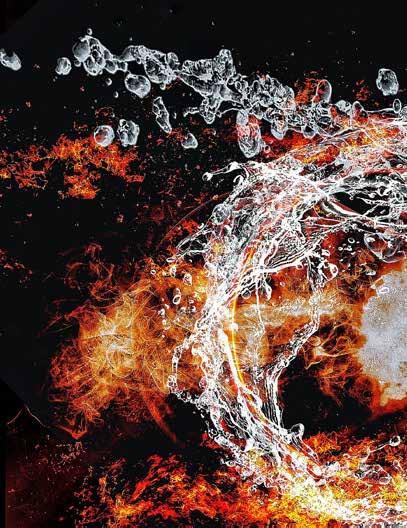
Reflect on effort along the way, not necessarily the final outcome
Use
strategies
Explain it to others
getting to the central causes of pelvic pain
Every patient we see has a pelvis. Given that in Australia around one in five women (Pitts et al 2008) and one in 14 men (Pitts et al 2008) have pelvic pain, a large proportion of our patients likely experience pelvic pain, whether they disclose it or not.
The aim of our topical session was to equip the everyday clinician with the tools that they need to start addressing pelvic pain. The session would have focused on intertwining science and practice, highlighting new areas of research and integrating that with tips learned from the clinic to help the non-pelvic clinician start to tackle patients with pelvic pain.
Start the conversation
Not surprisingly, many patients don’t disclose pelvic pain patients to their clinicians because they’re embarrassed. What is surprising, however, is that around one in five patients don’t disclose their pelvic pain because they feel their clinician will lack empathy and may not have the knowledge needed to help (Mann et al 2013). This is something we can address clinically, simply by starting a conversation around pelvic pain, asking questions and demonstrating empathetic listening. You can ask about pelvic pain directly but some patients might need more explanation about what the pelvis is comprised of— the organs, genitals and perineum.
Many types of pelvic pain are functional related, so asking about pain during these functions can also spark discussion. Some useful questions could be:
Do you ever have problems with urinary or faecal incontinence?
Are your bowel motions ever painful?
Do you ever experience pain during sex?
Are your periods painful? Painful periods can be a key player in women’s pelvic pain, so asking what a woman’s periods are like can also be a helpful starting place for a discussion.
A basic assessment
If you have started the conversation and your patient has disclosed their pelvic pain, you should follow it up with an assessment. Don’t fear—the assessment of a pelvic pain patient can be quite similar to any other chronic pain patient, and many valuable assessments can be undertaken through a ‘pants-on’ approach.
Like other pain presentations, the biopsychosocial model can help to guide our assessment of patients to understand their experience and contributing factors to their pain. Some pelvic pain presentations are associated with biological factors (adenomyosis and bacterial prostatitis as two examples), but many are not (vulvodynia
‘talk aloud’
July 2020 27
13 VOLUME 40, ISSUE 7, AUGUST 2020 AUSTRALIAN PAIN SOCIETY NEWSLETTER
This article was first published in the July 2020 issue of InMotion, an Australian Physiotherapy Association publication, and is reproduced with permission.
This article was first published in the July 2020 issue of InMotion, an Australian Physiotherapy Association publication, and is reproduced with permission.
and abacterial prostatitis as two examples). This can make a diagnosis difficult to achieve, but understanding the nature, pattern, and aggravators for a patient’s pain is a good place to start.
Cyclical pain in women may suggest a link to hormonal fluctuations such as dysmenorrhoea (period pain). Pain that is aggravated by different functions might give insight into possible biological contributing factors—for example, pain on defecation may be associated with endometrial lesions involving the bowel in women with endometriosis (Fauconnier et al 2002).
Psychosocial factors can play a role in the onset and/ or maintenance of pelvic pain for some people (Nickel et al 2008, Stones et al 2000). Some research that I have been involved in has looked at how we can assess these psychosocial factors, and how pelvic pain might also influence a person’s psychosocial status. For female patients, the Pelvic Pain Impact Questionnaire (PPIQ) can be a starting point for understanding how pelvic pain may impact a patient’s life (Chalmers et al 2017). A male PPIQ has just been developed but isn’t yet published. Similarly, a soon-to-be-published tool, the Pelvic Pain Psychological Screening Questionnaire (3PSQ), screens for comorbid psychological factors in pelvic pain patients and may assist in determining the need for on-referral for psychological interventions.
It is also important to gather similar information that you would with any other chronic pain patient, to get an understanding of the types of interventions you could use. How much does your patient understand about pain and/or their condition? What other factors could be contributing to their experience of pain? What is their overall health like?
Tips and tricks
Given that many patients fear that their clinician will lack empathy, validating the patient’s experience as real is the first essential step. No two patients will be the same, so a one-size-fits-all approach won’t work with pelvic pain. There are, however, some general management strategies that seem to help many patients. Many of these strategies are borrowed and adapted from research undertaken in other chronic pain populations, as research into pelvic pain is sparse.
Many pelvic pain patients will relate their pelvic pain symptoms to times of higher stress, so implementing strategies to reduce stress can be helpful. Stress can cause reflexive tightening of the pelvic floor, so many pelvic pain patients will also present with pelvic floor hypertonicity. The Pelvic Pain Foundation of Australia has some good resources for pelvic floor relaxation techniques.
There is mounting evidence to support the role of pain neuroscience education (PNE) in treating chronic pain conditions; however, evidence specifically in pelvic pain patients is limited. Recent Australian research by James et al (2019) supports the use of PNE in female pelvic pain patients. This education should include basic PNE principles such as those outlined in Explain Pain (Butler & Moseley 2013) but, as suggested by James et al, should also include education specific to the pelvis such as organ cross-talk, overcoming taboos, and consider the impact of pain on sexual function and partner relationships. At the core of the intervention, the learning outcomes we hope our patients achieve from PNE will be similar for all patients, regardless of whether they experience pelvic pain or some other kind of chronic pain.
A final tip for clinicians is to not embark on this journey alone. As physiotherapists, we cannot expect to have all the tools necessary to treat all complex pelvic pain patients. Having a network of multidisciplinary practitioners you can refer to will help you to provide holistic management to pelvic pain patients. Pelvic physiotherapists, gynaecologists, urologists, psychologists, and GPs with an interest in pelvic pain are all good players to have on your team. The APA’s online Facebook group for Women’s, Men’s, and Pelvic Health Physiotherapy is also a fantastic resource where you can reach out for help, ask questions, and start discussions with fellow clinicians.
Email inmotion@australian.physio for references.
Dr Jane Chalmers is a senior lecturer in pain sciences at the University of South Australia. Her research is focused on understanding pelvic pain, ranging from the lived experience of people with pelvic pain through to the physiotherapy assessment and treatment of pelvic pain.

28 australian.physio
14 AUSTRALIAN PAIN SOCIETY NEWSLETTER VOLUME 40, ISSUE 7, AUGUST 2020
This article was first published in the July 2020 issue of InMotion, an Australian Physiotherapy Association publication, and is reproduced with permission.
You can hear pain explained in new podcast

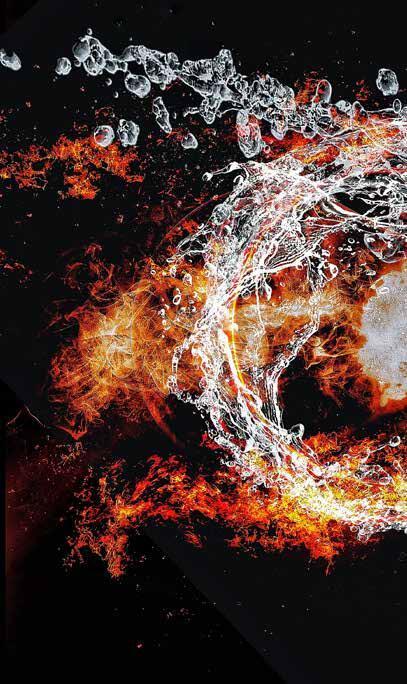
Pain research, the acceptance of it, the broader understanding of pain and the impact that understanding is having on the physiotherapy profession are topics explored in a Talking Physio podcast available now on the APA website.
In the podcast, Professor Lorimer Mosley and APA Pain Group chair Dianne Wilson get together for a robust conversation on all things pain. The duo explore pain research over the past 50 years and share their predictions for physiotherapy and pain science in the 20–30 years to come.
The pair also talk about the champions who have picked up the pain mantle and run with it as well as how the physiotherapy profession is leading the clinical translation of contemporary pain science into care. And they canvass some of the myths and misconceptions about pain, focusing on the scientific research that suggests that pain is not a marker of tissue damage but rather a mechanism for protection.
The podcast is a Physiotherapy Research Foundation (PRF) initiative supported by FlexEze, the exclusive partner of the PRF.
Tune into the podcast via the APA website.
Getting animated about pain videos
It was during a lunchbreak at Sydney’s Westmead Hospital that Joshua Pate, APAM, senior physiotherapist at the hospital’s pain clinic, had something of a lightbulb moment. Joshua had been thinking how the same educational message about pain—that pain doesn’t necessarily mean tissue damage—was being told to his patients over and over, and wouldn’t it be cool and efficient to have a professional animation video created to help patients visualise the concept?
Having watched many TED Talks and YouTube videos in his spare time, Joshua decided there and then to turn his idea into a reality. What started out as a ‘bit of a side project’ for Joshua has become an animation that has been viewed millions of times across YouTube and Facebook. And it is this novel approach to large-scale pain-related education, by working with TED-Ed and YouTube to disseminate educational animations about
pain science, that Joshua had planned to discuss at the APS conference in April.
At the now-postponed conference, Joshua, one of his PhD supervisors Professor Julia Hush, APAM, and Dr Hazel Jenkins had each planned to share their unique perspectives on ways to engage different populations in pain-related education. For Joshua, the dissemination of public health information has occurred via the medium of online animated videos, which he says are useful based on the responses and positive feedback from patients.
‘We’ve had really good feedback—I get emails all the time from people saying things like “I’ve never seen inside the nervous system before.” Often patients are afraid of textbooks, but if there’s a really engaging story, and a clever animation, they’re more than happy to watch that,’ Joshua says. ‘That’s what much of the data I was
July 2020 29
15 VOLUME 40, ISSUE 7, AUGUST 2020 AUSTRALIAN PAIN SOCIETY NEWSLETTER
This article was first published in the July 2020 issue of InMotion, an Australian Physiotherapy Association publication, and is reproduced with permission.
planning on sharing at the conference is about; how far these videos have reached, what are the limitations of this approach, and what are the future directions for the field. If you have an idea, how do you distribute it, and is it a good idea to distribute it everywhere or do you need to test the ideas first, before disseminating?’
Joshua, who was awarded the Best Student Research Paper in the pain stream at the 2019 APA TRANSFORM Conference Awards (supported by the Physiotherapy Research Foundation), has produced two animation videos with Ted-Ed; the first is the ‘Mysterious science of pain’ (tinyurl.com/y3v898xa) and the second is ‘The fascinating science of phantom limbs’ (tinyurl. com/yaasl5e3). Both of these videos have reached an audience in the millions on YouTube, and a third animation is currently in production, Joshua says.

In his research paper ‘Creating online animated videos to reach and engage youth: Lessons learned from pain science education and a call to action’ (tinyurl.com/ ycx2759t), Joshua collaborated with another leader in the pain field, Professor Lorimer Moseley, to compare the approach Lorimer used for the Tame the Beast animated video, ‘It’s time to rethink persistent pain’ (tinyurl.com/ y9yj4ndo). In the paper, Joshua and Lorimer explore the differences in cost, ownership, number of hours provided by the content expert, time from idea to publishing and other factors between using Ted-Ed and Tame the Beast.
‘With TED-Ed, you don’t have to pay any money but you won’t make any money, and you have less control and ownership; whereas with the private Tame the Beast approach, you have to have tens of thousands of dollars up front to be able to do it, but then you have much more control. In terms of reach and target audience, TED-Ed have 11 million subscribers, whereas working privately you have to make sure you know how to reach your audience,’ Joshua says. ‘So we wanted to call people to action: We, as physios, have important knowledge and public health messages to disseminate, and now we have access to platforms where we can educate the masses using really compelling animations.’
Joshua, who completed his PhD in paediatric pain education and who now lectures in musculoskeletal and paediatric physiotherapy at the University of Technology Sydney (UTS), says engaging and collaborating with TEDEd in such a way would allow physiotherapy clinicians and researchers to be context experts and allow creative experts to concentrate on creating the animation.
‘You get to be a context expert. You have a meeting with the producers, you explain the idea and then they run with it. For me, a big misconception about pain is that people think that the amount of damage someone has
in their body correlates well with the amount of pain they will have, but the literature doesn’t support that idea. To be able to give scientific illustrations and stories to back that argument up has been really interesting,’ Joshua says. ‘There’s been quite a bit of media coverage and we’re starting to get a bit of traction—people appear to be changing the way they think about the complexity of pain. That’s what my PhD has focused on, how people think about pain, so this project followed on really nicely to my thesis.
‘Rather than settling for a slideshow presentation, we have access to skilful people who are effective at communicating creatively. I think for me, the take home is: why don’t we engage more with other industries? Everyone involved can benefit from these collaborations. For example, with TED-Ed, the animator’s incredible work can get picked up by big companies like Pixar and such, which I think is why they’re involved in the animation process for free,’ Joshua says. ‘It’s not just the animators who can benefit, but the narrators, audio engineers, producers and directors too—so why don’t we give it a go? It really isn’t a huge time commitment for the content expert if you know your message and audience: it was a few hours’ work over the course of a few months.’
Dr Joshua Pate is a lecturer in physiotherapy at the University of Technology Sydney (UTS) and he has worked as a senior physiotherapist in multidisciplinary hospital pain clinics. Joshua’s PhD publications focused on how children think about the science of pain, and how that influences their pain and movement. He has also authored several TED-Ed online animations about pain science.
30 australian.physio
16 AUSTRALIAN PAIN SOCIETY NEWSLETTER VOLUME 40, ISSUE 7, AUGUST 2020
This article was first published in the July 2020 issue of InMotion, an Australian Physiotherapy Association publication, and is reproduced with permission.
Broken machines and busy-bodies
The way we talk about a health condition shapes the way we think and respond to a health condition. Our group of researchers from the University of Melbourne and La Trobe University has been looking at how people talk about knee osteoarthritis to help us better understand how people make treatment choices. The group is myself, Nicholas Taylor, Penny O’Brien, Peter Choong, Jason Wallis, Michelle Dowsey and Nora Shields. This topic is important because while clinical guidelines recommend evidence-based, nonsurgical interventions such as physiotherapy, exercise and weight loss as first line interventions for knee osteoarthritis, the evidence suggests these interventions are under-used.
At the APS scientific conference, I was to speak on how the language used by clinicians can perpetuate negative beliefs and behaviours among patients, and I was planning to present a series of interactive videos modelling helpful and unhelpful messages in the clinical setting. Instead I can detail an aspect of my presentation here.
To explore how people talk about knee osteoarthritis, we conducted a systematic search of the literature, gathering together qualitative studies exploring knee osteoarthritis from the perspective of people experiencing knee osteoarthritis, their carers and clinicians. The majority of 56 studies we found were conducted in the UK, Australia, the US and Canada, and therefore mostly represented a Western view of health.
Using a technique called discourse analysis, we identified two main ways of talking about knee osteoarthritis: an impairment discourse and a participatory discourse. In the impairment discourse, the body was typically referred to as a machine and knee osteoarthritis was a broken part of the body machinery, which stopped people from doing what they wanted to do. Just like using an unoiled engine, using the ‘broken’ knee was believed to be dangerous. The only way to ‘fix’ the broken part was for a ‘mechanic’ to pull it out and replace it with a new park. Like with any machine, body parts had a ‘manufacturer’s used-by date’. The ‘inevitable’ decline of the knee joint was perceived to be a normal part of ageing. As part of ‘normal’ ageing there was no need to provide psychological support for this ‘failing machine part’. Instead one had to learn to ‘put up with’ knee osteoarthritis until it had ‘worn enough’ to warrant a knee joint replacement.
In the participatory discourse, ‘busy bodies’ were healthy bodies regardless of age, and a healthy knee enabled the body to remain busy. Rather than trying to ‘fix’ knee osteoarthritis, the focus was on maintaining knee health for the busy body. The knee was perceived to be a structure cocooned in muscles. Unlike joint cartilage and bones which degenerated through invisible processes over time, muscles were visible and under voluntary control. By building up muscles, knees could become stronger and ‘healthier’. People with knee osteoarthritis
were positioned in the driver’s seat, steering the way to knee health. The role of clinicians as ‘custodians of knowledge’ was to empower people with knee osteoarthritis to seize the wheel, help ‘map the route’, and ensure the person had the resources and capacity they needed to navigate the journey. Once en route, knee health became a life journey rather than a destination.
While our study was limited to knee osteoarthritis, the impairment and participatory discourses we identified likely have relevance to other musculoskeletal pain conditions. Despite evidence pain experiences are poorly correlated with patho-anatomical changes, the belief that musculoskeletal pain signals a damaged body part which needs to be investigated, healed or fixed is widespread. People who endorse this belief are more likely to avoid activity and seek surgical rather non-surgical care.
It is critical that people with musculoskeletal pain have access to a discourse that encourages active participation in healthy behaviours. Physiotherapists play an important role in shaping discourses and are ideally placed to provide people who are seeking care with an alternative way of communicating about musculoskeletal pain. The analogy of the ‘body as a machine’ can perpetuate unhelpful beliefs about using the ‘damaged body’, relying on others to ‘fix’ the body, and can de-legitimise suffering. Instead, the notion of maintaining the ‘busy-body’ focuses on engagement in life activities and equipping people experiencing pain with the knowledge, skills and resources they need to drive their own healthy life journey.
Dr Samantha Bunzli, APAM, is a post-doctoral researcher at The University of Melbourne, Department of Surgery, within the Centre for Research Excellence in Total Joint Replacement. She has methodological expertise in qualitative research and content expertise in health behaviour models. In her research, she uses qualitative methods to explore the beliefs, coping responses and treatment of people with musculoskeletal pain and their clinicians.

July 2020 31
17 VOLUME 40, ISSUE 7, AUGUST 2020 AUSTRALIAN PAIN SOCIETY NEWSLETTER
This article was first published in the July 2020 issue of InMotion, an Australian Physiotherapy Association publication, and is reproduced with permission.
Taking the pain out of inconsistent language
Neuropathic pain, central sensitisation, non-specific pain, widespread pain—these are terms that are often used interchangeably to describe persistent pain. And having inconsistent use of language to describe pain is something Tim Mitchell says can lead to confusion for practitioners, patients and students.
‘Someone could go to three different practitioners—for example their GP, their physio and maybe a medical specialist—and have three different terms used, although they’re all broadly talking about the same thing. And that’s one of those classics that creates confusion for people,’ Tim says.
‘Another challenge is that because pain knowledge is still emerging, there are new terms being thrown around that are perhaps not being used in the right context. The language around pain is extremely important both for communicating between practitioners but also, more importantly, communicating with the patient,’ Tim says.
Tim is a Specialist Musculoskeletal Physiotherapist (as awarded by the Australian College of Physiotherapists in 2007) and a co-author of the Musculoskeletal Clinical Translation Framework (MCTF). At the Australian Pain Society’s 40th annual scientific meeting in April in Hobart, Tim was to have presented a pre-conference workshop on the MCTF—a framework that was designed to help clarify the use of pain terminology and better enable healthcare practitioners to examine, interpret and implement targeted management for people with musculoskeletal pain disorders based on contemporary evidence and using a common clinical language.
As a lecturer at Curtin University in Perth, Western Australia, Tim says one of the strategies he employs is to practice what he preaches and embed consistent language in the teaching programs, while encouraging other teaching staff to do the same. Other universities have also started incorporating the MCTF into their teaching and there have been a number of other national and international programs that have taken it on outside of the physiotherapy profession, Tim says. Nursing, medical, chiropractic and osteopathic practitioners as well as kinesiology courses have started using the framework in their teaching, and the MCTF e-books are about to be translated into five languages.
‘We set up the framework by using contemporary language that is broadly accepted and not just “physio speak”, and that’s across different health professions as well. So that language is consistent,’ Tim says. ‘The musculoskeletal framework that we developed was initially to assist teaching students about musculoskeletal pain. And it was about trying to create a fairly simple but comprehensive framework that encompassed all the different domains that do impact on people with musculoskeletal pain.’
Tim says the MCTF has application beyond musculoskeletal pain; the different factors within the framework have
application in a whole range of pain complaints and look at factors such as pain features, psychosocial considerations, work considerations, whole-person considerations and functional behaviours.
‘For example, we talk about lifestyle factors and whole-person considerations such as comorbidities and psychosocial factors, and those are across any health condition, those domains still apply,’ Tim says. ‘We’ve specifically tailored the framework around the musculoskeletal pain but you can have people with a cardiorespiratory or a neurological problem and these different factors will still be relevant to consider in their presentation. But there might be specific cardiorespiratory system or neurological system considerations with their diagnoses as well, obviously, but how we approach this is not different.’
Tim will conduct a live online lecture on Tuesday, 28 July at 7.30 pm about the different domains of the MCTF. The lecture is for APA members and Australian Pain Society members who were going to attend the APS conference in Hobart in April. The lecture is appropriate for any clinician who deals with any pain condition, not only musculoskeletal pain. It will incorporate training in the use of the framework, and will be immediately useful in clinical practice. The online event (tinyurl.com/y7vzvhae) is being coordinated by the APA South Australia branch in conjunction with the Australian Pain Society. Participants must register by noon on 28 July to be able to view the lecture.
Tim Mitchell is a Specialist Musculoskeletal Physiotherapist (as awarded by the Australian College of Physiotherapists in 2007) who works clinically managing and providing second opinions for more complicated and persistent musculoskeletal pain problems. Tim has taught on postgraduate musculoskeletal physiotherapy programs and also reviews Australian physiotherapy curricula. His research and teaching interest is in translating musculoskeletal pain knowledge into logical clinical practice.

32 australian.physio 18 AUSTRALIAN PAIN SOCIETY NEWSLETTER VOLUME 40, ISSUE 7, AUGUST 2020
IASP revised Definition of Pain

19 VOLUME 42, ISSUE 7, AUGUST 2020 AUSTRALIAN PAIN SOCIETY NEWSLETTER
IASP
Pain in the Time of Corona
If you haven’t already got the memo, 2020 is the IASP Global Year for the Prevention of Pain. Unfortunately, it seems that 2020 itself didn’t get the memo, with plenty of pain to go around!
The COVID-19 pandemic has resulted in the pain of many cancelled conferences (*ahem*), family reunions, holidays, eating and drinking out with friends…the list goes on. Now, nearly 6 months after the first restrictions started, many people have adjusted to their new lifestyle –working from home, Zoom dinner parties, remote learning, and home-schooling.
The Prevention of Pain is a complex task, including timely and quality access to healthcare from the earliest stages of onset and identification and management of psychosociocultural factors which, left untreated, could result in worse or more chronic pain. Prevention of pain is also about engaging in regular proactive healthcare and positive lifestyle habits. Most of our members will have more than a passing interest in these concepts. However, do we always apply them to our own lives?
Given the vast array of lifestyle adjustments we’ve all had to make, it’s no surprise that early data indicates that many people have either delayed or avoided regular medical and allied health appointments. Results of a survey of over 700 Australians conducted by the Continuity of Care Collaboration (CCC), an alliance of over 30 peak healthcare groups, found 52% of respondents had delayed or avoided medical appointments since COVID-19 restrictions had started in the three months to May 2020, and 51% would only seek face to face medical help in an emergency. Telehealth items were rapidly expanded in the immediate response to the COVID lockdowns, and these went a significant way toward facilitating regular, preventative healthcare. At the time of writing, telehealth items are expected to be rolled back on 30th September 2020, though many key bodies are
By Dr Laura Prendergast

lobbying the government to extend the package. Nevertheless, it is a timely reminder to reflect on our own preventative healthcare, and especially in this IASP Year for the Prevention of Pain, what we can do to prevent pain for ourselves, our loved ones, and of course for our patients. IASP have useful factsheets and infographics outlining various topics relating to the prevention of pain. Their introductory fact sheet and related infographic outlines six key areas to consider.
1. Maintain a healthful diet and weight. Even those who have great eating habits are bound to engage in a bit of comfort eating during times of heightened stress (all that extra banana bread and sourdough has to be eaten, after all!) There have also been periods of panic-buying of groceries as people prepare for potential self-isolation. Dietitians Australia has collated a great range of articles written by Accredited Practising Dietitians (APDs) with tips and advice for eating well during COVID-19, including how to optimise food choices, avoid binge eating or excess snacking (especially while working from home), how to shop less frequently, and how to utilise pantry stores and expand cooking skills.
2. Exercise regularly. Many Australians have felt the strain of not being able to attend the gym, exercise classes, and or other regular sporting pursuits. Patients tell us they miss the motivation of being able to attend pain management clinics where they can engage in hydrotherapy and group exercise classes. And many a parent has lamented not being able to let their kids burn of excess energy at the local playground. Especially being winter, it’s easy to fall out of good habits and spend more time bundled up indoors, being sedentary. However, now more than ever it’s important to get at least the recommended weekly amount of cardiovascular activity, to keep our muscles strong, support good mental health and sleep,
20 AUSTRALIAN PAIN SOCIETY NEWSLETTER VOLUME 42, ISSUE 7, AUGUST 2020
GLOBAL YEAR
and to keep our lungs in good working order. This is especially vital given that COVID-19 attacks our respiratory system, and exercise can minimise the chance of COVID-19 related complications, should we contract the virus.
Exercise Right, an initiative from Exercise and Sports Science Australia (ESSA; the peak body for Exercise Physiologists), has a great collection of suggestions to keep active at home and exercising safely in public as gyms begin to reopen.
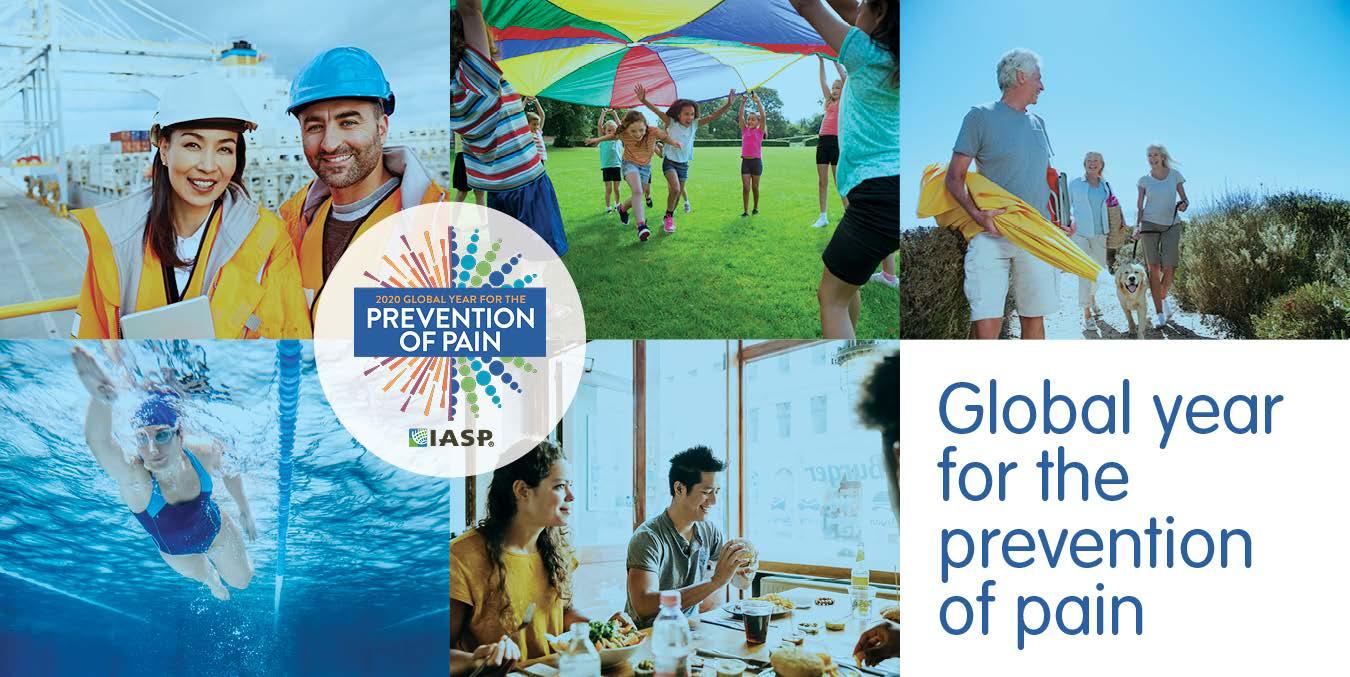
3. Eliminate unhealthy practices such as excessive alcohol use and smoking. Research from the Australian National University found that Australians are drinking more frequently, and in greater amounts, during the COVID-19 pandemic. This has been especially true for women, who report this is due to increased stress. In contrast, men reported increased drinking was due to boredom. More generally, GPs are reporting an increase in Australians presenting with problematic substance use, which could have follow-on effects for pain management. While it is known that alcohol is often use to self-medicate pain, chronic and
excessive alcohol intake can result in small fibre peripheral neuropathy. And withdrawal can increase nervous sensitivity, affecting multiple bodily systems. Turning Point has some great resources to those who may be struggling with substance use.
4. Work and rest in a variety of healthy postures. With many Australians now working from home, and early signs businesses are preparing to maintain a broader work-fromhome culture post-pandemic, it’s important to ensure we set up our working environment correctly. We also might need to look for creative ways to replace previous incidental exercise opportunities, such as walking to the printer, from building to building on hospital or university campuses, or even simply from the carpark to the office. When the time comes to return to work (full disclosure, this is being written by a still-in-lockdown Victorian!), ensuring we ease back into old routines gradually – considering the extra exercise involved in all the aforementioned activities. On the other hand, many have found working from home allows them to squeeze in more exercise, to take a walking lunch break or
21 VOLUME 42, ISSUE 7, AUGUST 2020 AUSTRALIAN PAIN SOCIETY NEWSLETTER
GLOBAL YEAR
Pain in the Time of Corona
stand-up Zoom meeting, or to do app-based or online exercise programs in the extra time saved by the commute. The University of Melbourne has advice for setting up your workstation effectively, reducing sedentary behaviours, and injury prevention strategies.
5. Manage stress. Stress management is always important when it comes to preventing pain, as we understand the role that stress can play from the earliest stages of pain onset to the long-term perpetuation of chronic pain. The COVID-19 pandemic has undoubtedly been stressful for many Australians – it feels like almost everything has changed from our prepandemic lives. When we are stressed it can be easy to see things as worse than they really are, and forget to engage in behaviours which help us to cope with stress. It’s important to remember that we are all well-practised in dealing with stress, and we often have great resilience to stress – in fact it’s the norm. But if you are struggling to cope, the Australian Psychological Society has some useful tips for positive self-talk, self-care, and finding professional support when needed.
6. Seek psychological therapy whenever needed. Isolation, cancelled plans, and a loss of structure are all common issues being reported by people during this pandemic. Additionally, many people are experiencing job loss and resultant financial insecurity, additional stress due to home-schooling, and a loss of practical and emotional supports they have previously relied upon. An expansion of telehealth items to see psychologists and psychiatrists has been a welcome change to the Medicare system, and has allowed many people to continue, or commence, seeing a mental health professional during this time. The Australian Psychological Society has a range of tip sheets for supporting your mental health during the pandemic, and how to access psychology through telehealth
The COVID-19 pandemic is likely to be with us for some time. So, in this Global Year for the Prevention of Pain and beyond, we must do what we can to support ourselves, and to look out for each other. For more on the 2020 IASP Global Year, visit our webpage
22 AUSTRALIAN PAIN SOCIETY NEWSLETTER VOLUME 42, ISSUE 7, AUGUST 2020
GLOBAL YEAR
COVID-19: Planning for the aftermath to manage the aftershocks
Thank you to APS member Steven Faux and colleagues Kathy Eagar, Ian Cameron, and Christopher Poulos for sharing the following recent publication.
Article first published online: 29 June 2020
Journal Reference: Medical Journal of Australia, 2020
DOI: 10.5694/mja2.50685
Link: https://onlinelibrary.wiley.com/doi/ full/10.5694/mja2.50685
ABSTRACT
Background
Coronavirus disease 2019 (COVID-19) has had a significant impact on healthcare systems across the globe. Australia and New Zealand have managed the crisis well thus far, but this does not mean we can allow complacency to set in. There is a need to plan for future waves and how we will manage patients as they enter the recovery phase.
Discussion
The Australian subacute sector is currently able to manage patients requiring rehabilitation following COVID-19. However, rehabilitation needs following COVID-19 are both broad and complex. Australia’s ability to plan and anticipate has been a strength in our response to date. We must now apply the same active approach to planning the post-acute and rehabilitation phases of care. Despite this, the Australian Government has delegated the rehabilitation phase of the COVID-19 response plan to state governments while failing to mention the post-acute phase. This places patients, hospitals, and their staff at risk, as many rehabilitation units are not prepared for COVID-19 cases.
Many questions surround when and how COVID-19 survivors will transition to post-acute care and rehabilitation. There is a clear need to develop and implement a consistent deisolation protocol, which will give confidence to activate a staged escalation plan. There are numerous logistical challenges to successfully planning for the next stages. The time for preparing for the recovery phase is now. If we apply the same vision and leadership to planning for the future we can avoid the challenges currently being experienced in other countries.
Declaration
The authors have nothing to declare.
Have you had an article accepted for publication this year?
The Australian Pain Society (APS) is keen to share publications from our members with their colleagues via our eNewsletter. If you’ve had an article accepted or published recently, please contact our Assistant Editor Joanne Harmon via the APS Secretariat with the title, authors, and reference (i.e., journal, volume, and DOI) of your article and request the submission template. We would love it if you also supply a short commentary (300 words max) to give our readers the gist of the article.
23 RECENT PUBLICATIONS VOLUME 42, ISSUE 7, AUGUST 2020 AUSTRALIAN PAIN SOCIETY NEWSLETTER
Pain Level 1 Course APS Member Discount
Late last year, the Australian Pain Society (APS) and the Australian Physiotherapy Association (APA) signed an agreement to allow APS members to attend the APA Pain Level 1 course for a discount rate. This course runs over one day and is delivered in a workshop style. The course was first delivered in 2019 in Sydney and Melbourne and received excellent reviews from the attendees. Its content covers the fundamentals of pain, dealing with topics such as the concepts and epidemiology of pain, the contributors to pain, and explores specific ways of assessing and treating pain in a multidimensional manner. The workshop will be presented in Sydney on 5th September and Brisbane on 10th October
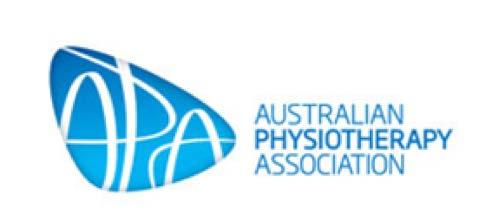
Six
To register for these workshops, go to: NSW QLD
To receive the special 20% APS member discount, login to the members’ area of the APS website for the voucher code.
The APA is also in the advanced stages of converting this Pain Level 1 course to fully online delivery. This mode of delivery will include some self-paced learning of “prereading”, recorded lectures, and homework, and then a 3-hour live webinar. As soon as this online delivery as available, APS members will be informed.
FREE Better Pain Management modules!
The Faculty of Pain Medicine (ANZCA) has partnered with the Therapeutic Goods Administration to develop a targeted pain management and safe opioid therapy eLearning program for primary care providers involved in managing those with chronic pain. Available at no cost to health care professionals residing in Australia, this course will help develop greater clarity and confidence with six key eLearning modules dedicated to best-practice opioids prescribing and pain management techniques.
‘Better Pain Prescribing: Clarity and confidence in opioid management’ includes the following modules:
Module 1: Making an effective pain diagnosis: a whole person approach
Module 2: The impact and management of psychological factors in pain
Module 3: A whole person approach to chronic pain
Module 6: Opioids in pain management
Module 7: Pharmacology of pain medicine
Module 11: High-dose problematic opioid use
24 AUSTRALIAN PAIN SOCIETY NEWSLETTER VOLUME 42, ISSUE 7, AUGUST 2020
EDUCATION
THE HCF RESEARCH FOUNDATION CALL FOR APPLICATIONS
HEALTH SERVICE RESEARCH GRANTS 2020
At the HCF Research Foundation, we strive to improve the delivery of health services for our members and all Australians. Our program funds research projects that focus on providing quality care and better patient outcomes.
Our 10th annual call for research projects will deliver funding to the research community from 1 January 2021.
We invite you to apply if your project aligns to the following topics:
1. EMERGING HEALTH CARE SOLUTIONS AND ALTERNATIVE MODELS THAT ENGAGE AND SUPPORT HEALTH CARE USERS
• Use of technology and innovative digital health care solutions.
• Evaluation of new models of telehealth that have improved health care accessibility.
• Evaluation of emerging models of acute care delivered in the community, including General Practitioner led models of care.
2. MANAGEMENT OF JOINT PAIN
• Supporting people with pain to self-manage their condition (i.e. back pain).
• Innovative non-invasive solutions to assist people with joint pain.
• Standardising clinical care to improve adherence to best practice.
We’re encouraging applications from collaborations of investigators from a range of backgrounds, including career researchers, practising clinicians, policy makers, and private sector organisations. Applications will be assessed on scientific merit as well their ability to affect meaningful change to health services provision. We’ll give more consideration to applications that demonstrate a strong opportunity and considered approach for translation of research outcomes into practice.
The closing date for applications is 5pm on Thursday 13 August 2020 (AEST).
For more information and to apply visit:
hcf.com.au/foundation
25 VOLUME 42, ISSUE 7, AUGUST 2020 AUSTRALIAN PAIN SOCIETY NEWSLETTER GRANTS
Professional Connection Grants
These newly renamed and expanded grants are available to Nursing and Allied Health professionals, as well as trainees and Early Career Researchers.
The Clinical Professional Connection Grant is designed to support APS members in the following ways:
• Nursing or allied health clinicians from non-metropolitan locations to visit a major metropolitan multidisciplinary pain centre, for the duration of generally one (1) week. Visits are intended to support professional learning (including the exploration of new models of care) that can inform service development in non-metropolitan services with single or limited discipline profiles;
• Trainee/early career researchers (i.e., researchers currently undertaking their PhD, or within five (5) years of PhD conferral) to visit a major metropolitan multidisciplinary pain centre for the purpose of conducting/initiating a clinicallyoriented research project that involves the development of a new partnership or collaboration with allied health, nursing, or medical pain specialists. Projects can use basic science or applied methods, but the clinical relevance of the project must be clearly articulated.
See website for Eligibility Criteria, Terms and Conditions, and application form.
26 AUSTRALIAN PAIN SOCIETY NEWSLETTER VOLUME 42, ISSUE 7, AUGUST 2020 GRANTS
Can you help improve psychological therapy for women chronic pelvic pain?
FREE ebook ‘Endometriosis and Pelvic Pain’
by pelvic pain experts Dr Susan Evans and Deborah Bush for every clinician who completes the survey! Usually retails for $27.50!
We are looking for mental health clinicians who use psychological or talk-based therapies with women who have chronic pelvic pain conditions. We are interested in finding out what clinicians use and find effective.
The information sheet, consent form and survey can be accessed by clicking here
Your contribution will help us form a better evidence base for psychological interventions for women with chronic pelvic pain conditions.
This project is part of a PhD project at the University of South Australia.
Participation is voluntary and your responses will be de-identified and kept confidential. This project has ethics approval from the University of South Australia (ID: 202576).
If you have any further questions about this survey, contact information can be found at the end of the information sheet in the survey.
We are truly grateful for your time. Your responses have the potential to provide valuable contributions to both research and clinical practice in this area.
Best Wishes, Tiffany Brooks
27 VOLUME 42, ISSUE 7, AUGUST 2020 AUSTRALIAN PAIN SOCIETY NEWSLETTER SURVEY



28 AUSTRALIAN PAIN SOCIETY NEWSLETTER VOLUME 42, ISSUE 7, AUGUST 2020 1 - 5 September 2020 #ISCoS2020GoesVirtual www.iscosmeetings2020.org REGISTRATION FEES* Member: USD $335 Non Member: USD $435 Full-time BA/MA Student: USD $200 *Please note rates shown are in USD $ and inclusive of tax as applicable by region. Join your friends and colleagues from around the world from the comfort of your own home or workspace FOR FURTHER INFORMATION, CONTACT: E: iscos@bcdme.com : @iscosmeetings SPINAL CORD INJURY (SCI) CARE: CONNECTING AND EDUCATING IN 2020 JOIN US AS WE MAKE ISC o S HISTORY WITH OUR FIRST FULLY VIRTUAL MEETING! EVENTS & NOTIFICATIONS




29 VOLUME 42, ISSUE 7, AUGUST 2020 AUSTRALIAN PAIN SOCIETY NEWSLETTER
20 ber 2020 More information can be found at dcconferences com au/pain2020 or via email at pain2020@dcconferences com au Online Registration Opens 4 August 2020
DATES Early Bird Registration Deadline 1 October 2020 www dcconferences com au/pain2020 EVENTS & NOTIFICATIONS
Dr Marc Russo and the PAIN2020 Committee invite you to join us at PAIN2020, the only meeting addressing pain management held in Sydney this year!
KEY
Expressions of interest online at: dcconferences.com.au/aps2021
REGISTRATIONS OPEN
4 NOVEMBER 2020
DEADLINES
Topical Sessions
INCLUDING
Pre-Conference Workshops
Topical Sessions
Trainee Session
Extensive Industry Exhibition
Sponsored Sessions
Discipline Sub Group Meetings
Welcome Reception Conference Gala Dinner
JOIN US ONLINE
#AusPainSoc
Australian.Pain.Society
@AusPainSoc
For sponsorship and exhibition opportunities or more information please contact the APS Conference Secretariat
DC Conferences Pty Ltd
P: 61 2 9954 4400
E: aps2021@dcconferences.com.au

W: dcconferences.com.au/aps2021
Allan Basbaum is a professor and Chair of the Department of Anatomy at the University California San Francisco, USA. His research addresses the molecular mechanisms that underlie the generation of persistent pain after tissue or nerve injury.

Siri Leknes is a Professor of Social and Affective Neuroscience at the University of Oslo, Norway and a Senior Researcher at Oslo University Hospital. Her lab, the Leknes Affective Brain lab (LAB lab) studies how the brain and body give rise to pleasurable and painful feelings, and how these feelings are connected to decisions and behaviour.
Amanda C de C Williams is Reader (Associate Professor) in clinical health psychology at University College London; consultant clinical psychologist at the Pain Management Centre, University College London Hospital, UK; and research consultant for the International Centre for Health and Human Rights.


30 AUSTRALIAN PAIN SOCIETY NEWSLETTER VOLUME 42, ISSUE 7, AUGUST 2020
Free
28 September 2020
Papers & Posters 27 October 2020 Rising Star Award 27 October 2020 Early Bird Registration 23 February 2021
Professor Allan Basbaum
Professor Siri Leknes
Dr Amanda C de C Williams
EVENTS & NOTIFICATIONS



31 VOLUME 42, ISSUE 7, AUGUST 2020 AUSTRALIAN PAIN SOCIETY NEWSLETTER SAVE THE DATE 2021 FPM Symposium Friday 30 April | Melbourne #FPM21MEL EVENTS & NOTIFICATIONS
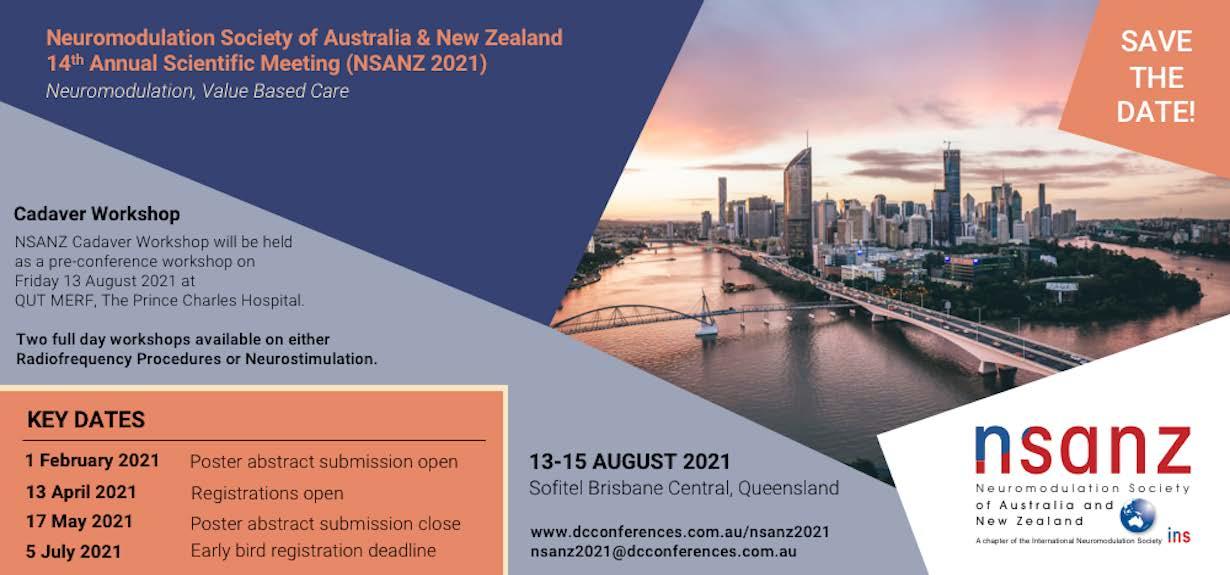

32 AUSTRALIAN PAIN SOCIETY NEWSLETTER VOLUME 42, ISSUE 7, AUGUST 2020 EVENTS & NOTIFICATIONS
NEW!
• Pain Research Forum Webinars
New series of weekly seminars to help keep the pain research community connected during the COVID-19 pandemic and to provide virtual educational opportunities: https://www.painresearchforum.org/forums/webinar
Other items of interest for our members:
• Latest opioids data from the Australian Bureau of Statistics: https://www.abs.gov.au/ausstats/ abs@.nsf/MediaReleasesByCatalogue/CC21BEAE2026450DCA25847F0013A28F?OpenDocument
• Australia’s annual overdose report 2019: http://www.penington.org.au/australias-annual-overdose-report-2019/
• New videos from NSW Health: Working with Aboriginal People https://www.youtube.com/watch?v=AV4Muq87ekQ&feature=em-uploademail
• The Third Australian Atlas of Healthcare Variation https://www.safetyandquality.gov.au/atlas
• Painaustralia eNewsletter latest issue, available online at http://www.painaustralia.org.au/media/enews
• ePPOC: electronic Persistent Pain Outcomes Collaboration
For more information about ePPOC, refer to the website: http://ahsri.uow.edu.au/eppoc/index.html
• PainHEALTH website http://painhealth.csse.uwa.edu.au/
• Stanford University
CHOIR Collaborative Health Outcomes Information Registry: https://choir.stanford.edu/
• Opioid Podcasts for GPs
20 week series from the Hunter Postgraduate Medical Institute: http://www.gptraining.com.au/recent-podcasts
• Airing Pain
Pain resources via an online radio show produced by Pain Concern, a UK registered Charity: http://painconcern.org.uk/airing-pain/
• Digital Health Guide
Developed by Primary Health Network Tasmania: https://digitalhealthguide.com.au/Account/LogOn?ReturnUrl=%2fSpecialtyFormulary%2f2
At login, Username: connectingcare, Password: health
• Indigenous Resources
New webpage on the APS website aggregating Indigenous resources: http://www.aci.health.nsw.gov.au/chronic-pain/health-professionals/quick-steps-to-managechronic-pain-in-primary-care
33 VOLUME 42, ISSUE 7, AUGUST 2020 AUSTRALIAN PAIN SOCIETY NEWSLETTER FYI
FYI
NPS MedicineWise resources:
• Choosing Wisely Australia – News & media: http://www.choosingwisely.org.au/news-and-media
• Over the counter codeine – changes to supply: https://www.nps.org.au/medical-info/clinical-topics/over-the-counter-codeine-changes-to-supply
• Medicines with codeine – what you need to know: https://www.nps.org.au/medical-info/consumer-info/medicines-with-codeine-what-you-need-to-know
TGA
• Codeine information hub: https://www.tga.gov.au/codeine-info-hub
NSW Agency for Clinical Innovation resources:
• Brainman and Pain Tool Kit translations, SEP15: http://www.aci.health.nsw.gov.au/chronic-pain/translated-resources
• Pain Management Resources: http://www.aci.health.nsw.gov.au/resources/pain-management
• Quicksteps to Manage Chronic Pain in Primary Care:
http://www.aci.health.nsw.gov.au/chronic-pain/health-professionals/quick-steps-to-managechronic-pain-in-primary-care
- Built into Quicksteps: “How to de-prescribe and wean opioids in general practice”: http://www.aci.health.nsw.gov.au/chronic-pain/health-professionals/quick-steps-to-managechronic-pain-in-primary-care/how_to_de-prescribe_and_wean_opioids_in_general_practice
• A list of helpful apps for consumers and clinicians now available at: http://www.aci.health.nsw.gov.au/chronic-pain/health-professionals/management-of-chronic-pain
• Chronic Pain in the ED: https://www.aci.health.nsw.gov.au/networks/eci/clinical/clinical-resources/ clinical-tools/pain-management/chronic-pain-in-the-ed
34 AUSTRALIAN PAIN SOCIETY NEWSLETTER VOLUME 42, ISSUE 7, AUGUST 2020 FYI AND MEMBERSHIP
Ms Bianca Comfort Psychology
New Members at 27 July 2020
Calendar of Events
These dates and events are current at the time of publication. Due to the current health concerns with COVID-19, we recommend you make your own enquiries before planning to attend
1-5 September 2020
International Spinal Cord Society Online, Virtual Conference
https://www.iscosmeetings2020.org
14-15 September 2020
Occupational Therapy Australia
2020 Virtual OT Exchange, Virtual, Interactive Conference
https://www.otausevents.com.au/ otexchange2020/
17 - 19 September 2020
Australian & New Zealand Society of Palliative Medicine ANZSPM
Pullman Auckland, Auckland, New Zealand https://willorganise.eventsair.com/2020anzspm-conference/
Late 2020- TBA
RACGP - GP20
Satellite events in each Capital City, Hybrid Interactive, Online Conference
https://www.racgp.org.au/gp20/gp20-home
15 - 17 October 2020
International Neuromodulation Society
TBA, Paris, France https://e-ins.org/
16-18 October 2020
Australian Psychological Society Online, Virtual, Online Conference
https://www.psy2020.com.au
28-31 October 2020
Australian College of Rural and Remote Medicine (ACRRM) and Rural Doctors
Association of Australia (RDAA)
The Crowne Plaza, Hunter Valley, NSW https://rma.acrrm.org.au/covid-19-update
4 -7 November 2020
Wounds Australia
Brisbane Convention and Exhibition Centre, Brisbane, QLD https://wounds2020.com.au/?utm_ source=australianpainsociety&utm_ medium=banner&utm_campaign=website
6-8 November 2020
European Pain Federation EFIC Online, Virtual, Online Conference https://europeanpainfederation.eu/virtual-paineducation-summit/
11 -13 November 2020
Clinical Oncology Society of Australia (COSA) Convention Centre, Brisbane, QLD https://www.cosa.org.au/events/annualscientific-meeting/
14-15 November 2020
Convenor - Dr Marc Russo Hyatt Regency, Sydney, NSW https://dcconferences.eventsair.com/ pain2020/
4-6 March 2021
Exercise & Sports Science Australia (ESSA) Perth Convention & Exhibition Centre, Perth, WA http://researchtopractice2020.com.au
12 -14 March 2021
Australia New Zealand Headache Society
Sofitel Wentworth Hotel , Sydney , NSW https://anzheadachesociety.org/2020-anzhsheadache-annual-scientific-meeting/
35 VOLUME 42, ISSUE 7, AUGUST 2020 AUSTRALIAN PAIN SOCIETY NEWSLETTER CALENDAR OF EVENTS
18-20 March 2021
New Zealand Pain Society Annual Scientific Meeting 2021
Copthorne Hotel, Bay of Islands, New Zealand https://www.nzps2021.nz
9-11 April 2021
Spine Society of Australia
International Convention Centre, Sydney, NSW https://dcconferences.eventsair.com/ssa-2021/
18-21 April 2021
Australian Pain Society 41st Annual Scientific Meeting
National Convention Centre, Canberra, ACT https://www.dcconferences.com.au/aps2021/
30 April 2021
Faculty of Pain Medicine (FPM) Symposium
2021
Melbourne Convention and Exhibition Centre, Melbourne, VIC https://www.anzca.edu.au/events-courses/ events/fpm-events/fpm-national-events/2020faculty-of-pain-medicine-symposium
19-21 May 2021
Australian & New Zealand Society for Geriatric Medicine (ANZSGM)
Sofitel Melbourne on Collins, Melbourne, VIC http://www.anzsgmconference.org/
21-23 May 2021
Australian Psychological Society College of Clinical Psychologists 2021 Annual Conference
Sofitel Brisbane Central, Brisbane, QLD https://www.psychology.org.au/APS-CCLINConf/2020
22-25 June 2021
Rehabilitation Medicine Society of Australia and New Zealand (RMSANZ)
Gold Coast Convention and Exhibition Centre, Gold Coast, QLD https://www.dcconferences.com.au/ rmsanz2021/
23-25 June 2021
Occupational Therapy Australia Cairns Convention Centre, Cairns, QLD
https://www.otaus2021.com.au
27 June-1 July 2021
International Association for the Study of Pain (IASP)
TBA, Amsterdam, Netherlands
https://www.iaspworldcongress.org
13-15 August 2021
Neuromodulation Society of Australia & New Zealand (NSANZ) 14th Annual Scientific Meeting
Sofitel Brisbane Central, Brisbane, QLD
https://www.dcconferences.com.au/nsanz2021/
21-23 October 2021
Australian Physiotherapy Association
Brisbane Convention and Exhibition Centre, Brisbane, QLD
https://australian.physio/pd/conferences-andmasterclasses
11-13 November 2021
Australian and New Zealand Association of Oral & Maxillofacial Surgeons
Hotel Grand Chancellor, Hobart, Tasmania
https://www.anzaomsconference.com.au/
24-27 March 2022
IASP Pain in Childhood SIG
Cordis Hotel, Auckland, New Zealand
http://www.ispp2022.nz/home.html
36 AUSTRALIAN PAIN SOCIETY NEWSLETTER VOLUME 42, ISSUE 7, AUGUST 2020 CALENDAR OF EVENTS
Vision, Mission & Aims
Vision:
All people will have optimal access to pain prevention and management throughout their life.
Mission:
The Australian Pain Society is a multidisciplinary association whose mission is to advance pain prevention, management and clinical practice.
Priorities:
In order to achieve our mission, the Australian Pain Society will provide:
• Education
• Advocacy
• Research
• Services and resources
• Membership
• Good governance and operations
37 VOLUME 42, ISSUE 7, AUGUST 2020 AUSTRALIAN PAIN SOCIETY NEWSLETTER VISION, MISSION & AIMS
APS Directors
President:
Dr Anne Burke
Central Adelaide Local Health Network
Royal Adelaide Hospital
Adelaide SA 5000
Tel: 08 8222 5403 Fax: 08 8222 5904
President-Elect:
Ms Trudy Maunsell
Acute Pain Service
Princess Alexandra Hospital
Woolloongabba QLD 4102
Tel: 07 3176 5547 Fax: 07 3176 5102
Secretary:
Dr Will Howard

VIC
Tel: 03 9496 3800
Treasurer
Mr Tim Austin
Camperdown Physiotherapy
Newtown NSW 2042
Tel: 02 9517 1787 Fax: 02 9516 2491
ACT Director:
Dr Andrew Watson Calvary Hospital



Canberra ACT 2617
Tel: 02 6201 6352 Fax: N/A
NSW Director:
Dr Tim Ho

Inner West Pain Centre
RPA Medical Centre
Newtown NSW 2042
Tel: 02 9517 1764 Fax: 02 9517 1832
NT Director: Ms Diann Black Recovery






Royal Darwin Hospital
Casuarina NT 0811
Tel: 08 8931 1029 Fax:08 8922 8325
QLD Director:
Mrs Joyce McSwan
Gold Coast Primary Health Network
Persistent Pain Program, QLD
Tel: 0412 327 795 Fax: 07 3539 9801
SA Director:
Dr Michelle Harris
Royal Adelaide Hospital and Lyell McEwin Hospital
Adelaide SA
Email: michelle.harris2@sa.gov.au
TAS Director:
Mrs Dinah Spratt
Physiotas Physiotherapy
Shearwater TAS 7307
Tel: 03 6428 7500 Fax: 03 6424 7811
VIC Director:
Dr Laura Prendergast

Pain Service, Austin Health
Chronic Pain Clinic, Goulburn Valley Health VIC
Tel: 03 9496 3134 or 03 5832 3020
WA Director:
Mr Shadreck Tozana
Functional Revival and Perth WA
Tel: 0437 541 165
38 AUSTRALIAN PAIN SOCIETY NEWSLETTER VOLUME 42, ISSUE 7, AUGUST 2020
APS DIRECTORS
Office Bearers
Immediate Past President:
Ms Fiona Hodson
Hunter Integrated Pain Service
John Hunter Hospital Campus
New Lambton NSW 2305
Tel: 02 4922 3435 Fax: 02 4922 3438
SPC Chair:
A/Prof Kevin Keay



Department of Anatomy
University of Sydney
Sydney NSW 2006
Tel: 02 9351 4132 Fax: 02 9351 2817
IASP Liaison:
Professor Michael Nicholas Pain Management Research Institute

Royal North Shore Hospital
St Leonards NSW 2065
Tel: 02 9926 7894 Fax: 02 9662 6279
Website: https://www.iasp-pain.org
Communications Coordinator:
Dr Anne Burke
Central Adelaide Local Health Network
Royal Adelaide Hospital
Adelaide SA 5000
Tel: 08 8222 5403 Fax: 08 8222 5904
Newsletter Editor:
Dr Lincoln Tracy
School of Public Health and Preventive Medicine
Monash University
Melbourne VIC 3004
Tel 03 9903 0288
Newsletter Assistant Editor:
Dr Joanne Harmon


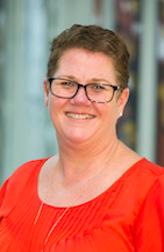
School of Clinical and Health Sciences
University of South Australia
Adelaide SA 5000
Tel 08 8302 1442
PhD Scholarship Chair:
A/Prof Michael Farrell
Department of Medical Imaging and Radiation Services
Monash University
Clayton VIC 3800
Tel: 03 9905 6094 Fax: 03 9902 9500
Secretariat:
DC Conferences Pty Ltd
PO Box 637
North Sydney, NSW 2059
Tel: 02 9016 4343 Fax: 02 9954 0666
Email: aps@apsoc.org.au
Website: www.apsoc.org.au
39 VOLUME 42, ISSUE 7, AUGUST 2020 AUSTRALIAN PAIN SOCIETY NEWSLETTER OFFICE BEARERS
























































